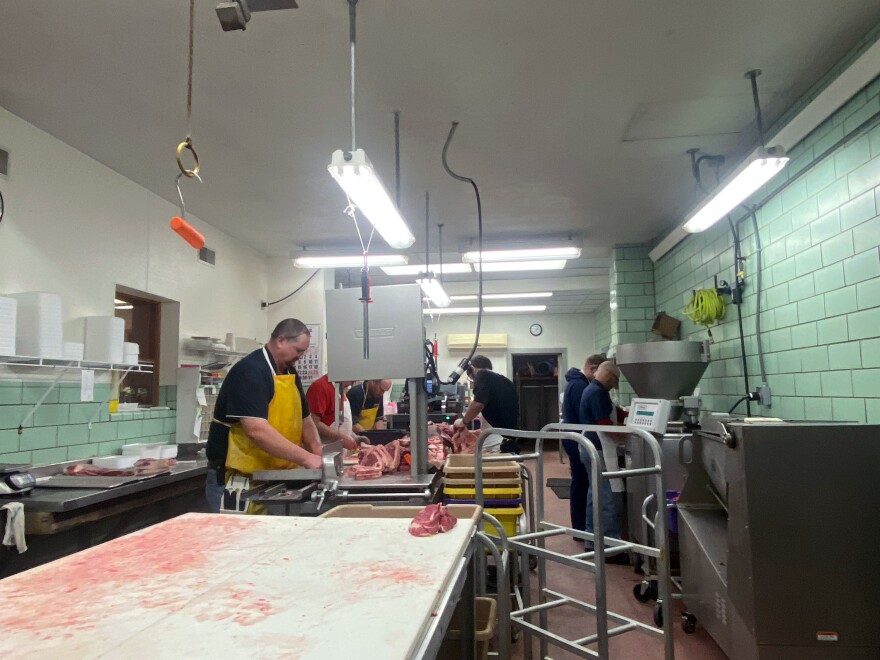Right now, farmers that raise animals for meat can’t find places to get their stock slaughtered and processed. The Ohio Meat Processing Grant aims to stop that bottleneck.
The grant program was made available last summer through the signing of the Ohio state budget for the fiscal year 2022-2023. It funded the program at $10 million for meat packing facilities to expand capacity, upgrade to new equipment, such as buying a new meat slicer, or cover training costs.
One of those processors is Brian Winner, he operates Roberts Winner’s Sons Inc., a fourth generation meat packing facility in Darke County. His facility mostly deals with cattle and hogs. He applied for the state grant and said processors like him can't keep up with the demand.
“We can only do so much,” Winner said. “And everybody flocked to us as all the other producers in Ohio or anywhere else across the United States. So we're maxed out right now.”
The state funds come nearly two years after COVID-19 has overwhelmed meat packing facilities across the country— many of which experienced large-scale COVID outbreaks.
Much of that pent-up demand comes after the big meat packers such as Tyson Foods, JBS USA Holdings, Inc and Cargill, Inc, have been experiencing staffing shortages throughout the pandemic, according to Winner.
Ohio doesn’t have major meat packing facilities, according to Valerie Graham, the executive director of the Ohio Association of Meat Processors (OAMP). She said most processors in the state are small to medium sized operations that usually process about 30 head of cattle a week.
“What we're needing right now is a way that we can move more product through the system,” Graham said. “Unfortunately, today if you work with some of these processors, you may not have a kill or harvest day for at least 12 months.”
But the money can only do so much. Winner said there’s also the issue of labor and a shortage in workers across all industries. He adds meat cutting was already a dying trade before the pandemic, but now it's much harder to find skilled employees.
“Meat cutting is something you don't learn overnight. It takes years to develop skills and actually do it efficiently,” Winner said. “It’s also not the most glorious job, you're working in a lot of colder environments, heavy lifting and harvesting animals so it’s just not cut out for everybody.”
Winner said if he gets the grant — which will begin to be disbursed in January — he plans to add a new freezer for his facility to open up more storage space.
As for labor, Graham said OAMP is working closely with the Ohio FFA Association to help introduce younger workers and recent high school graduates to the meat processing business. She adds there’s no telling how the industry will stabilize in the near future.
Food reporter Alejandro Figueroa is a corps member with Report for America, a national service program that places journalists into local newsrooms.
Copyright 2022 WYSO. To see more, visit WYSO. 9(MDA5NTM4MTIyMDE0MTg3NDc2MTVlZjdmNQ001))


